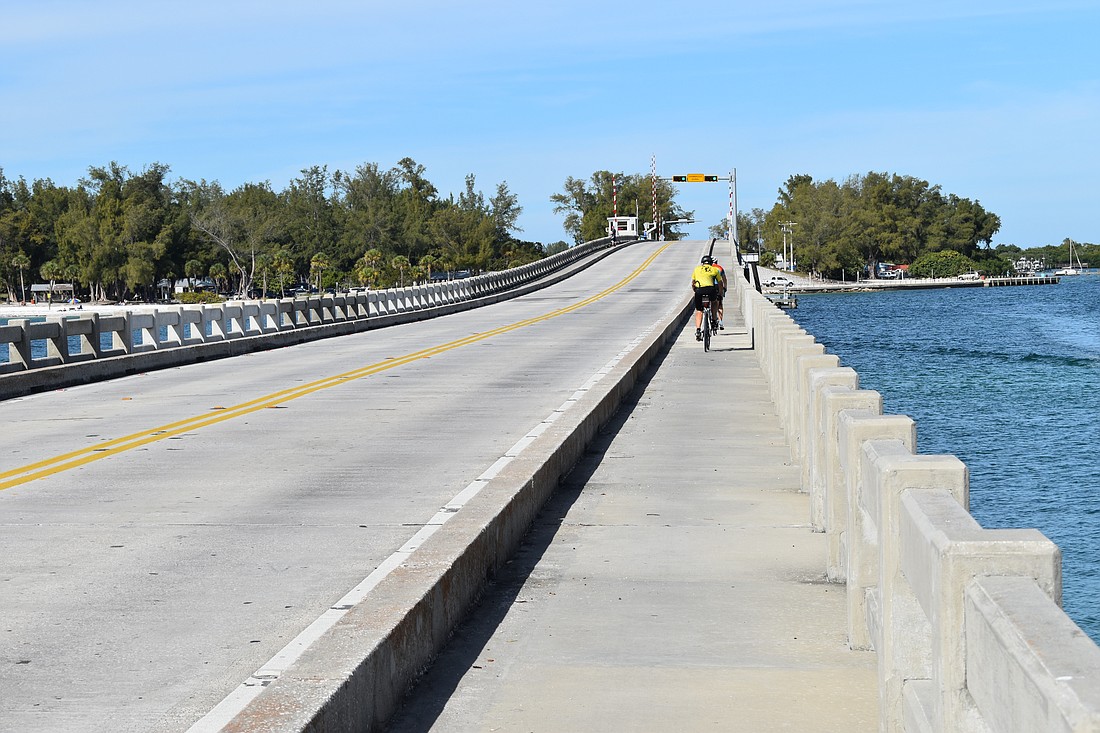- May 3, 2025
-
-
Loading

Loading

What’s next for the Longboat Pass Bridge? That’s still up in the air.
But on March 14, the Florida Department of Transportation held a public workshop for community input for the Longboat Pass alternatives being proposed through the Project Development and Environmental (PD&E) Study.
At the workshop held at Christ Church of Longboat Key, a presentation video played on repeat to introduce residents to the topic before walking around the room to learn more from the display boards. Representatives from the FDOT and project team were also available to answer questions.
Along with residents, several town commissioners and Manatee County District 3 Commissioner Kevin Van Ostenbridge were present at the workshop.
“I think that FDOT did a great job planning everything out for residents,” Van Ostenbridge said. “It’s clear they are giving us options to think about.”
Longboat Key District 1 Commissioner Gary Coffin agreed that it was good to have the options laid out for residents, and allow residents to have input. He also mentioned that all the alternatives presented looked to be safer for boater navigation.
“As a boater, I’m concerned about the navigational part of what’s there now, which is very dangerous. It’s very narrow, and there’s times when the current is super strong through there,” Coffin said.
The current bridge has a width of just under 48 feet for boats to navigate through. All three proposed alternatives have a horizontal clearance of 90 feet, which is more typical for newer bridges.
On the existing bridge, there are two travel lanes, each 12 feet wide. One of the aspects included in all three alternatives would be to include a 12-foot shoulder on each side. That would help to mitigate traffic issues in situations like when a car breaks down or when emergency personnel need to pass through.
If no bridge alternative is chosen, the existing bridge would need maintenance, which is pricey in the long run.
“The older a bridge gets, the more it costs,” FDOT District 1 Communications Specialist Patricia Pichette said.
There are three build alternatives in consideration: a low-level bascule bridge, a mid-level bascule bridge and a high-level fixed bridge.
Two of the build alternatives will maintain the drawbridge function, but each has a different height that would decrease how many times the bridge is needed to open.
One of the build alternatives is a high-level fixed bridge that would be 78 feet tall from the high water line. This alternative would be high enough so that no drawbridge is necessary.

Due to the height of that bridge, the road would need to be graded carefully to meet the existing road on either side. On the Coquina Beach side, that means one of the beach parking entrances would be pushed north. Closer to the boat ramp, there would be an underpass road for cars to drive through and maintain access to the ramps.
The Longboat Pass project is not included in the Sarasota Manatee Metropolitan Planning Organization’s Long Range Transportation Plan. But the project is included in the FDOT’s Adopted Five Year Work Program, as well as the town’s long-range planning.
Design for whichever alternative is selected will be funded by the FDOT in 2026. Funding for right of way and construction is still undetermined. But Pichette said there are certain funds and grants specifically for bridge projects that the FDOT will look into for construction.
During construction, traffic would be maintained for any of the build alternatives, according to FDOT representatives. The alternative bridge will be built to the immediate west of the existing bridge.
Also with construction of the new bridge, an environmental evaluation will be necessary, which looks into factors like protected species, habitat, floodplain, contamination and land use.

The new bridge would cut through an area with mangroves and seagrasses. The FDOT has mitigation procedures that would go into effect and try to replace whatever is tampered with.
After the new bridge is up, the old bridge would need to be disposed of. Though it’s not yet decided what will happen with the old bridge materials, the FDOT’s usual procedure is to work with the contractor to figure out how to dispose of or recycle the materials.
Next steps for the project are to finalize a preferred alternative before proceeding with study approval and location design.